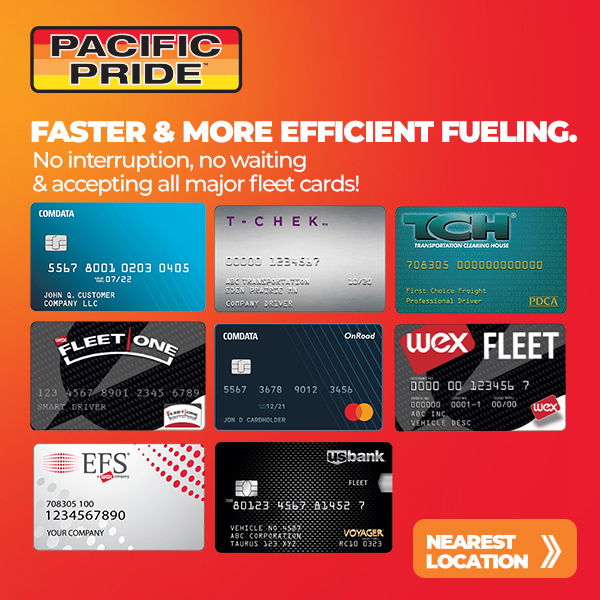
By Fleet Management Weekly Staff
February 21, 2024
Automation is changing the fleet industry from the inside out. Technological advances have allowed them to enhance control over their operations through automation, and automation is improving processes for everything from driver onboarding to scheduling.
Ridecell, Inc. is a leader in fleet automation with a digital solutions platform that combines vehicle control and data insights to automate workflows and contribute to operating fleets more efficiently and sustainably. The company powers some of the most successful fleets across Europe and North America.
Fleet Management Made Simple
 “We’re seeing a trend in moving from one-way connections with vehicles to two-way connections,” says Heidi DiAngelo, Ridecell’s Strategic Business Development Director. “We can start to send commands to those vehicles and talk with them.”
“We’re seeing a trend in moving from one-way connections with vehicles to two-way connections,” says Heidi DiAngelo, Ridecell’s Strategic Business Development Director. “We can start to send commands to those vehicles and talk with them.”
This two-way connection is what enables Ridecell to deliver such stellar results to its clients. While companies have been collecting data from vehicles for a while, they’re just now starting to integrate digital vehicle control into the mix. This combination of automation and digital control makes it easier for fleet managers and drivers to do their jobs.
A Wide Range of Services
Ridecell offers several services to fleets, including:
- Driver Management: Fleet managers can perform faster onboarding for new employees and offboard for departing employees.
- Scheduling: Ridecell’s platform allows for both scheduled and on-demand reservations for each vehicle in the fleet.
- Automatic End of Rental: Once the vehicle has been dropped off at the assigned location, Ridecell can automatically lock the vehicle and end the reservation.
- Chargebacks: When funds need to be returned, Ridecell can perform automated department chargebacks on a daily, weekly, or monthly basis.
- Tracking: Fleet managers will always know where their vehicles are thanks to real-time monitoring of vehicle status and location on a live map.
- Analytics: Using data collected by each vehicle, Ridecell will automatically deliver utilization and insight reports to optimize operations better.
The Benefits of Partnering With Ridecell
Ridecell’s variety of services delivers incredible benefits for its clients. First and foremost is the increase in efficiency and lowering of costs brought on by automation. With routine tasks being handled automatically, fleet managers can focus on higher-intensity tasks.
“Fleets are simplifying,” says DiAngelo. “They’re moving to digitalization and enabling computers to talk to computers, allowing fleet managers to return to more strategic positions. They don’t have to spend hours or days analyzing data and finding trends or information.”
Fleet managers have greater peace of mind knowing their vehicles’ exact location and status at all times. This enhanced visibility improves security and efficiency as managers know which vehicles are available at what times. Increased efficiency also makes it easier to meet sustainability goals, as a well-maintained fleet reduces energy waste.
Benefits extend well beyond fleet managers, as the drivers benefit significantly from Ridecell’s services. The user experience is streamlined when a driver can digitally schedule a vehicle or lock and unlock a car with their smartphone.
 Ridecell works with local and international partners, helping deliver mobility solutions and digitalization for fleets of all sizes. One of their partners, an international company with over a million vehicles, has been working with Ridecell to deploy a lifecycle automation solution across multiple countries.
Ridecell works with local and international partners, helping deliver mobility solutions and digitalization for fleets of all sizes. One of their partners, an international company with over a million vehicles, has been working with Ridecell to deploy a lifecycle automation solution across multiple countries.
“Through this deployment process with our partner, we’ve seen a 30% reduction in the idle days of vehicles,” says DiAngelo. “So, the vehicles aren’t just sitting around anymore. They know what stage they’re at in the lifecycle, and they can proactively push.”
Operations 360: A Self-Acting Fleet Solution
For Ridecell, the focus isn’t on automating a bunch of disconnected pieces of an organization but instead on connecting the vast systems in a fleet into one unified system. This is shown through Ridecell Operations 360, which automates all the manual tasks associated with a vehicle’s life cycle.
“Self-acting fleet control is entirely new to the fleet industry, but it’s not new to the surrounding world,” says DiAngelo. “We’ve been using automation around us for long periods. What’s fresh about this is that it’s bringing automation that we use daily.
“Think about your Echo in your home but bringing it now to the fleet. We enable the connection of multiple siloed systems that we all still use and need in the fleet, whether internal systems or external systems. We enable those systems to talk to one another and use data to complete the work. It is a boosting system, or the connective tissue between systems, which enables automation and helps us get back to playing more strategic roles in our business.
 “Operations 360 strings together every part of the vehicle’s lifecycle from beginning to end, automating each process step. Ordering, delivery, fitting, accident management, and even marketing vehicles for resale are all handled and automated on one simplified platform. Fleet managers can see unified, real-time data of all their assets, allowing them to conduct deeper analysis and make complex decisions much more accessible.
“Operations 360 strings together every part of the vehicle’s lifecycle from beginning to end, automating each process step. Ordering, delivery, fitting, accident management, and even marketing vehicles for resale are all handled and automated on one simplified platform. Fleet managers can see unified, real-time data of all their assets, allowing them to conduct deeper analysis and make complex decisions much more accessible.
“Another exciting trend in the industry right now is moving from three- to five-year leases and extending solutions into rental or short- and mid-term leases,” says DiAngelo. “Operations 360 allows an organization to provide multiple services and ways of acquiring, leveraging, and using a vehicle.
“They can take that vehicle from rental and put it back into a three- to five-year lease or vice versa. You can watch vehicles move like a package through the lifecycle from beginning to end and through different lifecycles.”
The Upfitting Black Hole
In addition to giving fleet managers more power, they also give them more transparency. They’ve even broken open one area of automation that, until now, has only sometimes been the most transparent process: upfitting.
 “What typically happens is you have your vehicle stamp in, and then you send it into the fitting,” says DiAngelo. “Then there’s five or six steps depending on what’s required to happen to that vehicle in between. But we need visibility into all those steps while it’s in the fitting process. What could happen is that the customer is anxiously waiting for their vehicle to arrive, and when it doesn’t arrive, they need to contact a fleet manager to find out what’s going on with that vehicle. But that information still needs to be visible, so the fleet manager must contact the vendor to find out what’s happening with the vehicle.
“What typically happens is you have your vehicle stamp in, and then you send it into the fitting,” says DiAngelo. “Then there’s five or six steps depending on what’s required to happen to that vehicle in between. But we need visibility into all those steps while it’s in the fitting process. What could happen is that the customer is anxiously waiting for their vehicle to arrive, and when it doesn’t arrive, they need to contact a fleet manager to find out what’s going on with that vehicle. But that information still needs to be visible, so the fleet manager must contact the vendor to find out what’s happening with the vehicle.
“The solution allows everyone to see the exact steps required to move that vehicle through the fitting process. The vendor, the fleet management company, and the customer have that visibility. This enables us to be very proactive with the customer and allows the vendor to communicate better with the fleet management company. This isn’t just a benefit to one or the other party but also to the industry.”


